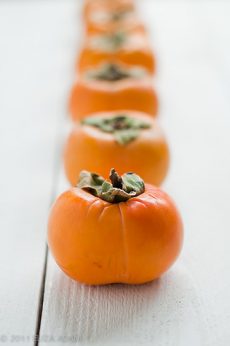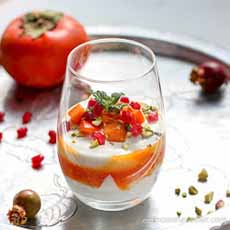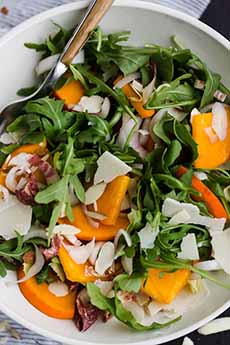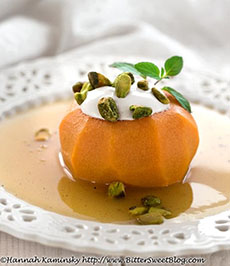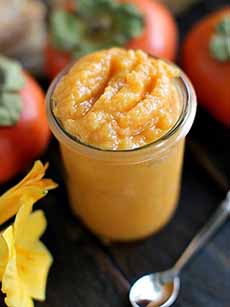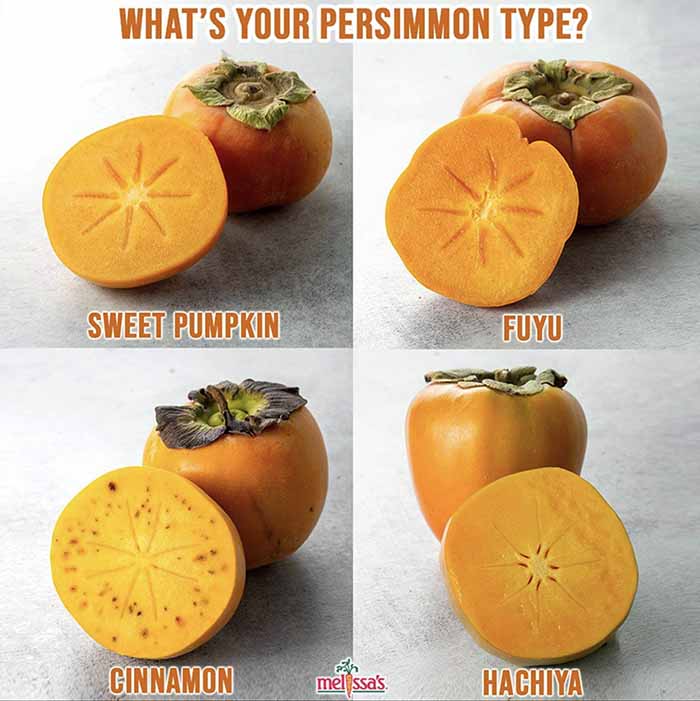TIP OF THE DAY: Persimmon Varieties For National Persimmon Month
|
|
It’s persimmon season—October is National Persimmon Month. The Asian persimmon (Diospyros kaki—photo #1) is native to China, where it has been cultivated for centuries More than two thousand different cultivars exist in China alone. The fruit is also known as the Oriental persimmon, Japanese persimmon, and kaki, among other names. The fruit traveled to Japan and Korea where additional cultivars were developed*. The plant was introduced to California in the mid 1800s, where additional cultivars were also developed. There are hundreds of varieties grown worldwide. Their cultivars are grown in California, which grows some 20 varieties. There is also an American persimmon, Diospyros virginiana, a smaller version of the fruit. Honey-flavored, they are not usually found in stores due to their short shelf life. Here’s more about them. And like all persimmons, after they reach peak ripening, the flesh becomes mushy (and ready for smoothies and other recipes where the fruit is mashed). If you’re looking for a fruit tree, both species of persimmons are fairly easy to grow. In addition to being an enjoyable fruit, persimmons can be used in many recipes. Check out this list. Our favorite uses for persimmons are: Which should you choose? Here’s advice from Melissa’s Produce, which carries four of the most popular varieties. See all four in the photo at the bottom of the article. They have different optimal ripeness levels, so be sure you know which variety you’ve bought, and whether it should be very soft or firm to the touch. Persimmons grow in temperate to tropical climates. Cultivation of Diospyros kaki began thousands of years ago in China and about 1,300 years ago in Japan. It seems to be the only edible member of the Ebenaceae family, the other well-known member of which is ebony wood. From 1870 to 1920, Japanese and Chinese cultivars were introduced to California by the USDA. They were once grown in the American Gulf States, but now only grown commercially in California’s San Joaquin Valley. The Hachiya, a vigorous cultivar, is the largest one grown in California, followed by the Fuyu, which requires pollination to increase yield and improve color. Today, the major producers are China (with 66% of world production), Japan, Brazil, Korea and Italy. Other producers include Israel, U.S., New Zealand, Australia, Spain, Georgia, Egypt and Chile [source]. |
|
|
________________ *As agriculture developed thousands of years ago, farmers cross-bred varieties of plants and animals to improve certain features and eliminate others. Fruits were bred to be larger and more prolific; to be sweeter; to have a more pleasing color or texture; to survive in different environments and seasons; to resist insects and disease, to be more durable and last longer after harvesting, etc.
|
||
